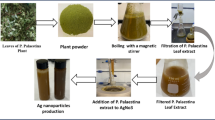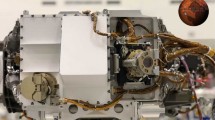Abstract
Polarization and positive phase contrast microscope were concomitantly used in the study of the internal structure of microbial cells. Positive phase contrast allowed us to view even the fine cell structure with a refractive index approaching that of the surrounding environment, e.g., the cytoplasm, and transferred the invisible phase image to a visible amplitude image. With polarization microscopy, crossed polarizing filters together with compensators and a rotary stage showed the birefringence of different cell structures. Material containing algae was collected in ponds in Sýkořice and Zbečno villages (Křivoklát region). The objects were studied in laboratory microscopes LOMO MIN-8 Sankt Petersburg and Polmi A Carl Zeiss Jena fitted with special optics for positive phase contrast, polarizers, analyzers, compensators, rotary stages, and digital SLR camera Nikon D 70 for image capture. Anisotropic granules were found in the cells of flagellates of the order Euglenales, in green algae of the orders Chlorococcales and Chlorellales, and in desmid algae of the order Desmidiales. The cell walls of filamentous algae of the orders Zygnematales and Ulotrichales were found to exhibit significant birefringence; in addition, relatively small amounts of small granules were found in the cytoplasm. A typical shape-related birefringence of the cylindrical walls and the septa between the cells differed in intensity, which was especially apparent when using a Zeiss compensator RI-c during its successive double setting. In conclusion, the anisotropic granules found in the investigated algae mostly showed strong birefringence and varied in number, size, and location of the cells. Representatives of the order Chlorococcales contained the highest number of granules per cell, and the size of these granules was almost double than that of the other monitored microorganisms. Very strong birefringence was exhibited by cell walls of filamentous algae; it differed in the intensity between the cylindrical peripheral wall and the partitions between the cells. Positive phase contrast enabled us to study the morphological relationship of various fine structures in the cell (poorly visible in conventional microscope) to anisotropic structures that have been well defined by polarization microscopy.







Similar content being viewed by others
References
Brocksch D (1994) Phase-contrast, Nomarski (differential interference) contrast and dark-field microscopy: black and white and color photomicrography. In: Celis JE (ed) Cell Biology, vol 2. Academic Press, San Diego, pp pp 5–pp 14
Canter-Lund H, Lund JWC (1995) Freshwater algae, their microscopic world explored. Biopress Ltd., Bristol
Graham EL, Wilcox LW (2000) Algae. Prentice Hall, Upper Saddle River
Gregorová M, Fojt B, Vávra V (2002) Microscopy of raw and technical materials (in Czech). Publishing House of Faculty of Science Masaryk University, Brno
Heath JP (2005) Dictionary of microscopy. Wiley, Chichester
Hindák F, Cyrus Z, Marvan P, Javornický P, Komárek J, Ettl H, Rosa K, Sládečková A, Popovský J, Punčochářová M, Lhotský O (1978) Freshwater algae (in Slovak). Slovak Pedagogical Publ House, Bratislava
Hoffman R (1977) The modulation contrast microscopy: principles and performance. J Microsc 110:205–222
Inoué S (2011) Lighting the way in microscopy. J Cell Biol 194:810–811
Piper J (2007) Relief phase contrast: a new technique for phase contrast light microscopy. Microsc Anal (Europe) 21(108):9–12
Prosser V (1989) Experimental methods of biophysics (in Czech). Academia, Praha
Wolf J (1954) Microscopical technique (in Czech). State Health Publishing House, Praha
Wolowski K, Hindák F (2005) Atlas of euglenophytes. Publishing House Veda, Bratislava
Zernike F (1935) Das Phasenkontrastverfahren bei der mikroskopischen Beobachtung. Z Techn Phys 16:454–455
Žižka Z (2012) Simple sets for digital microphotography used and tested in the study of microorganisms. Folia Microbiol 57(6):509–512
Žižka Z (2014) Anisotropic structures of some microorganisms studied by polarization microscopy. Folia Microbiol 59(5):363–368
Acknowledgments
This work was supported by the project RVO 61388971 (Institute of Microbiology, Academy of Sciences CR, Prague).
Author information
Authors and Affiliations
Corresponding author
Rights and permissions
About this article
Cite this article
Žižka, Z., Gabriel, J. Concomitant use of polarization and positive phase contrast microscopy for the study of microbial cells. Folia Microbiol 60, 545–550 (2015). https://doi.org/10.1007/s12223-015-0397-8
Received:
Accepted:
Published:
Issue Date:
DOI: https://doi.org/10.1007/s12223-015-0397-8




